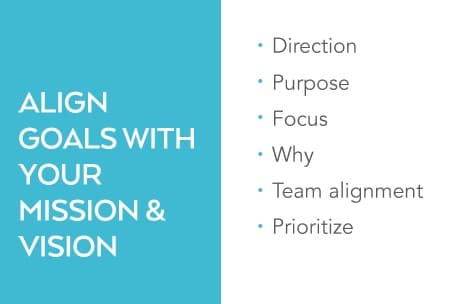This is the first article in an eight part series on how to create a digital strategy.
The first thing to do when creating a digital strategy for your brand is have a clear direction. You need to have a purpose. You’ve heard about the importance of understanding your why. This will be covered in a separate post. When you create goals, start with your mission and your vision.
Mission is about your purpose it describes the product, service, offer, your customers, and the problem it solves. In short, it’s really who you are and what you offer.
Your vision is about defining the ideal future state for your business. It’s where you want to be and what you want to accomplish.






